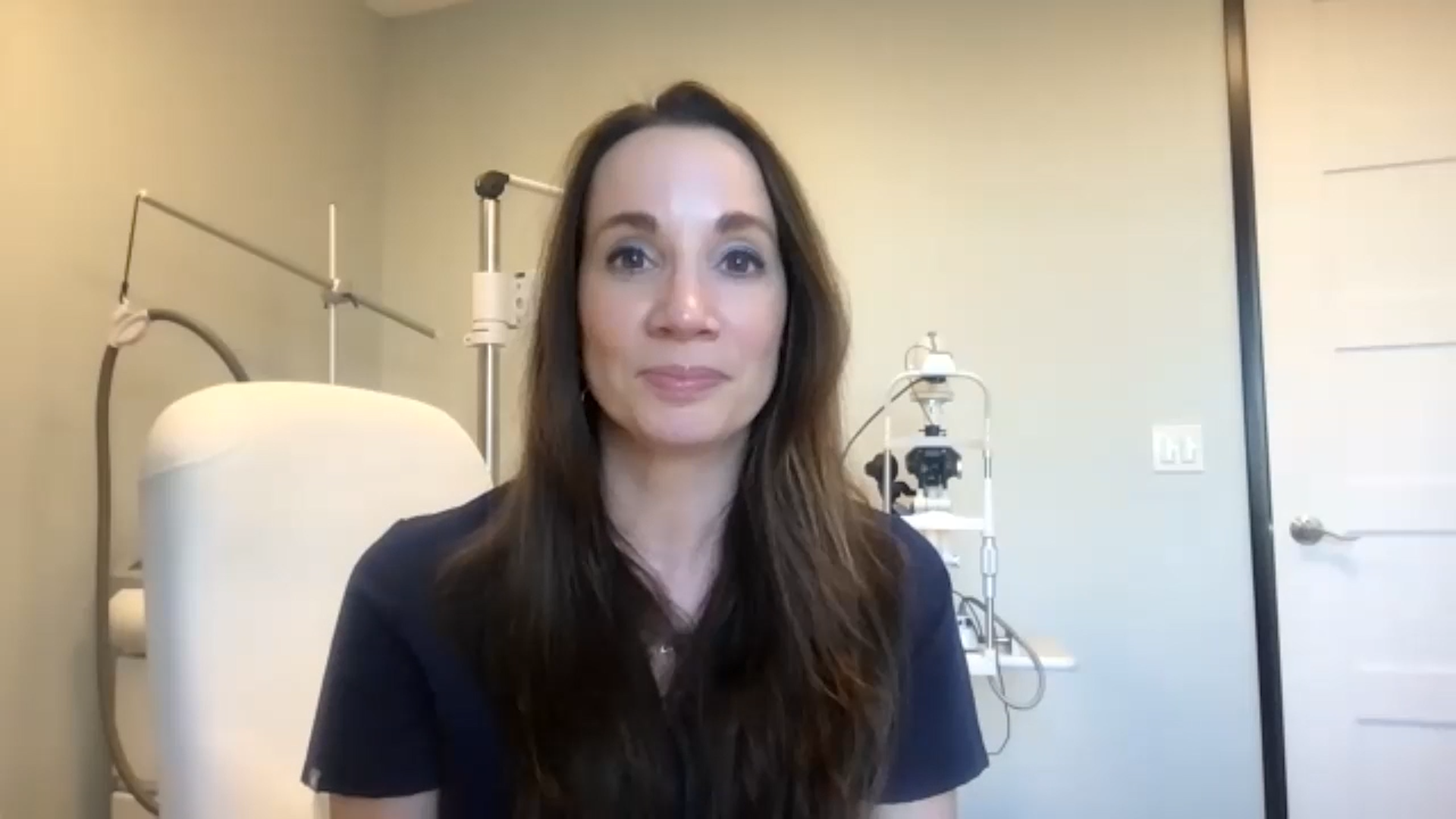Mitchell A Jackson, Hawaiian Eye and Retina 2023: Intraocular lens exchange – surgical pearls
It was a pleasure to have the opportunity to meet with Dr Mitchell A Jackson (Jacksoneye, Lake Villa, IL, USA) who shared surgical pearls from his presentation, on successful IOL exchange with an open capsule.
Questions:
- What risks are associated with intraocular lens (IOL) exchange with an open capsule? (0:19)
- What factors influence the decision to perform IOL exchange with an open or intact posterior capsule? (2:18)
- What surgical pearls would you like to share for successful IOL exchange with an open capsule? (4:10)
The presentation entitled, Pearls for IOL Exchange with Open Capsule was presented at the Hawaiian Eye and Retina 2023 meeting, 14–20 January, 2023.
Disclosures: Mitchell A Jackson is a consultant for Alcon, Johnson & Johnson, RxSight, Bausch & Lomb.
Support: Interview and filming supported by Touch Medical Media. Interview conducted by Lisa Glass.
Filmed as a highlight of Hawaiian Eye and Retina 2023.
I am Dr. Mitchell Jackson, an eye surgeon in private practice at Jacksoneye. I am founder/CEO of Jackson with 30 years in private practice and I specialize in cataract and refractive surgery.
What risks are associated with intraocular lens (IOL) exchange with an open capsule? (0:19)
The biggest risk in an open capsule is you can drop a new lens into the posterior vitreous. If you’re not careful there, you can have vitreous, which is a big deal. You have to clear the vitreous. So if you’re doing a scleral fixated procedure like a belt loop or you monitor eye wall glue technique or whatever scleral technique you’re going to do, you have to get rid of the vitreous where you’re putting the lens. So you’re removing the lens. There’s vitreous around it. You have to remove it. So you have to have your skill set has to be good at doing a
two-part anterior vitrectomy or having an AC maintainer. And doing a vitrectomy. Or in some cases, you might have to do a pars planar vitrectomy, it’s OK for anterior segment to do a pars planar vitrectomy if they’re trained in it. So, or you can actually have a vitreoretinal surgeon scrub in with you and help you with the case if you’re not skilled in pars planar vitrectomy. Luckily, I can do a pars planar vitrectomy. Not to the level to do like a retinal procedure, but enough to do an IOL exchange. So I’ve been trained to do that. So you have to have that skillset. If you don’t have that skillset to remove vitreous, you shouldn’t be doing an IOL exchange if it requires removing vitreous. So that’s the biggest risk in my opinion. And you have to know why you’re fixing the problem in the first place. So make sure you if you have a dysphotopsia from monofocal going, you’re going to take the lens from the bag, make sure you’re going to put, for example, a new three piece in the sulcus, which may fix that problem. So have a plan also to fix the problem. You don’t have to go back in again.
What factors influence the decision to perform IOL exchange with an open or intact posterior capsule? (2:18)
Well, this goes back to the reasons for doing it. So I always say the biggest thing, a lot of surgeons out there, they put a multifocal, for example, dry focal or whatever, it can be, even a monofocal and a patient, day one, day, week one, they’re complaining
from the beginning. If they’re complaining from the beginning from glare halo and it’s probably not from posterior capsule haze for example, they’ll rush and do a YAG and then they open the caps on the patients still complaining. If patients are happy in the beginning and then eventually complain. It might be PC haze, but if they’re complaining from the beginning, don’t rush to do a YAG capsulotomy. You probably want to keep that capsule, posterior capsule intact to make your life easier to fix the problem. So maybe you can still use the bag to put a new lens. You probably want to do it fairly early too. So we have a toric IOL that rotated, go back and put a CTR and rotate it back in position. If you are doing it because patients are having persistent glare halo or some visual disturbance from a trifocal,
then you probably could have a discussion with the patient. You know a lot
of people say “I get great results from my trifocal, they’re 20/15 and J1” but I see how they’re 20 happy. So if they’re not 20 happy, you better be ready to do an IOL exchange and I
wouldn’t do any premium IOL if you’re not able to do
an IOL exchange, so you have to be prepared to do two things: and IOL exchange
or enhance a patient if they’re happy to tweak them. If you miss refractive target, you may not want to do IOL exchange, you may just do a LASIK PRK or SMILE to tweak them if they’re off a little bit, which is OK, but you have to have those capabilities when you’re doing premium IOL.
What surgical pearls would you like to share for successful IOL exchange with an open capsule? (4:10)
This gets back to what I said earlier, most of the time with an opening capsule, the biggest problem is you have to be ready to do an anterior pars planar vitrectomy in most of those cases. And you could do a two-port anterior vitrectomy, I would not do coaxial, just to a two-port anterior vitrectomy. You don’t want to direct fluid into the vitreous and keep bringing vitreous up. Also, you can make sure you do an intercameral dexamethasone and make sure you’ve cleared all the vitreous. And then if you have a clear space and it’s, you know, use your best guess to protect the structures and put your lens, your whatever technique, your new iris fixation, sulcus, scleral technique. Just make sure you’re putting the lens in to fix the problem in the first place. But the biggest thing is seeing the images where your triamcinolone catalog makes you clear it all out to a good vitrectomy. And that’s pretty much to make sure you don’t have to do like a full vitrectomy, just have to make sure the vitreous is clear from the incisions, the pupil, the iris, you know, wherever you put in the lens, if you put it in right behind the lens, just make sure all that’s clear. And I always say some of the famous retinal surgeons out there have always said that doing a vitrectomy is not the complication. Doing the vitrectomy when you’re supposed to is not a complication, not doing a vitrectomy when you are supposed to have a complication. If you have to do an exchange on that, which is rare. Early days before they had the active shield, there are a lot of compliant patients not wearing the UV protective glasses. You had to exchange them because they let the lenses go bad by not protecting you from UV light. But now with the active shield, it’s a lot less common to have to do that. But if you do have to do that, the lens is a little more fragile, quote, unquote. When you go to try and cut it out and it can crumble, quote unquote, and you don’t want that. So once it’s locked in, it acts like any other IOL but pre lock-in. If somebody is really non-compliant, you have to remove that lens. There’s a Snyder Osher 18 gauge scissors that you want to use versus a standard MST type scissors or standard IOL cutting scissors that most people use. Most surgeons use. So this serrated Snyder Osher 18 gauge scissors, which of course I don’t have any financial disclosure. It’s designed for the lens, so it won’t cause it to crumble the way it cuts it. So just a little Pearl. Luckily, it’s rare now with the active shield, but it’s a good thing to bring up.
Subtitles and transcript were auto-generated.






